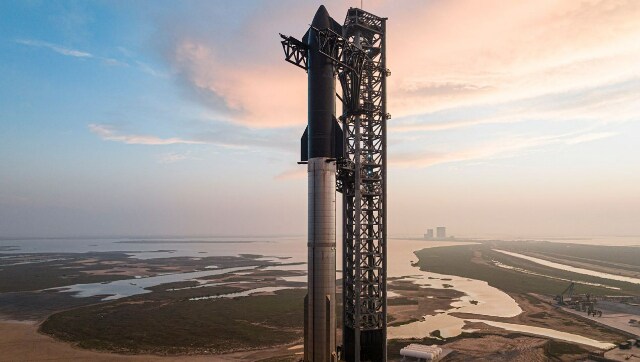
SpaceX announced that the launch of their Starship rocket was a massive success, despite the rocket exploding at the end of the test launch. SpaceX also says that they triggered the explosion intentionally.

SpaceX announced that the launch of their Starship rocket was a massive success, despite the rocket exploding at the end of the test launch. SpaceX also says that they triggered the explosion intentionally.
SpaceX claims to have pulled the trigger that detonated Starship in mid-air during its second orbital flight attempt on Thursday. The mammoth 395-foot stack, which included the Super Heavy rocket and the Starship, took off at 9:33 AM ET for its inaugural orbital launch but exploded into flames four minutes later.
The Super Heavy launch vehicle failed to split when Elon Musk’s team initiated the flight termination device, throwing it into an uncontrolled death spiral. Thousands of spectators gathered around the South Texas site to witness Starship launch its 33 powerful Raptor engines and blast out into space before a swift unplanned dismantle.
The launch was a success, says SpaceX
Although the outcome was not ideal, Elon Musk, NASA, and the SpaceX crew are celebrating its accomplishment – the essential aim was to get Starship off the ground, says SpaceX.
Also read: Elon Musk says SpaceX’s Starship spacecraft is ready to launch as soon as next week
Musk had warned the globe ahead of Thursday’s voyage that there was a 50% possibility the spacecraft might explode during the test flight. However, any setbacks will be extremely costly. Musk has stated that the entire programme will cost between $3 billion and $10 billion.
“Now this was a development test,” said SpaceX Principal Integration Engineer John Insprucker during the company’s live feed. “This is Starship’s maiden test flight. And the idea is to collect the data, clear the pad, and get ready to go again.”
“As a result, you never know what will happen. But, as previously said, excitement is assured. And Starship provided a fairly stunning conclusion to what had been a truly remarkable test thus far.”
Thursday was SpaceX’s second try this week, with the first being cancelled due to a frozen pressure valve on Monday.
How the day of the launch went
The day began with SpaceX loading Starship with liquid oxygen and methane, followed by an engine cool. As 9:30 AM ET neared, the crew stated that the winds were ‘looking fine’ for launch and that no problems had been noted.
Also read: After failed launch attempt, SpaceX reschedules Starship test flight
However, the air of optimism was dashed as the countdown clock reached 40 seconds and the flight director requested a pause to conduct final-minute inspections. The world waited for what seemed like an age for the crew to decide the destiny of the expedition.
But the clock was ticking, and when it reached zero, Super Heavy’s Raptor engines fired, producing 16.5 million pounds of thrust during liftoff and sending the vessel on its way. The mission began with promise as Starship flew through the sky at 1,242 miles per hour, going higher and higher with each second.
The cheering within the control room became louder and louder as Starship approached space.
What went wrong?
Engineer John Insprucker reported two minutes after launch that the rocket was prepared for stage separation at three minutes.
Also read: Massive SpaceX rocket explodes minutes after takeoff from Texas
The main engine shut down at two minutes and 51 seconds as intended, but the upper stage cone swung back towards Earth, sending the rocket into a spiral at three minutes and 31 seconds.
However, SpaceX’s engineers had not given up on the mission, stating that they were still waiting for stage separation despite the rocket spinning in circles. “It appears that we observed the beginnings of the flip, but obviously we’re watching the full Starship stack rotating from the ground cameras,” Insprucker added.
“We should have separated by now, since this does not look to be a nominal issue,” says the father. The broadcast shifted to crews in the control room who were celebrating the rocket’s accomplishment, despite the fact that the orbital mission was a failure.
At three minutes and 59 seconds, a fireball ejected from the Super Heavy, obliterating the stack in mid-air. The plan was for the craft to fly 150 miles into the stratosphere before cruising for an hour before crashing into the Pacific Ocean.
Despite the fact that the whole flight test was not completed, SpaceX deemed it a success.
“We cleared the tower, which was our last chance,” said Kate Tice, a SpaceX quality systems engineer, during the incident, which was live-streamed. “Success comes from what we learn from a test like this, and today’s test will help us increase Starship’s reliability as SpaceX attempts to make life multi-planetary,” SpaceX tweeted.
Read all the Latest News, Trending News, Cricket News, Bollywood News,
India News and Entertainment News here. Follow us on Facebook, Twitter and Instagram.